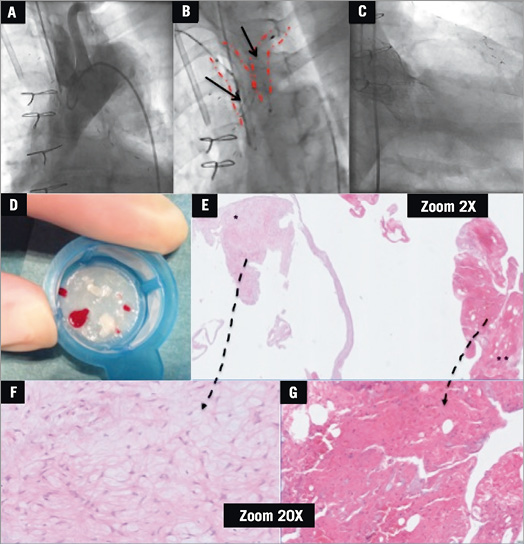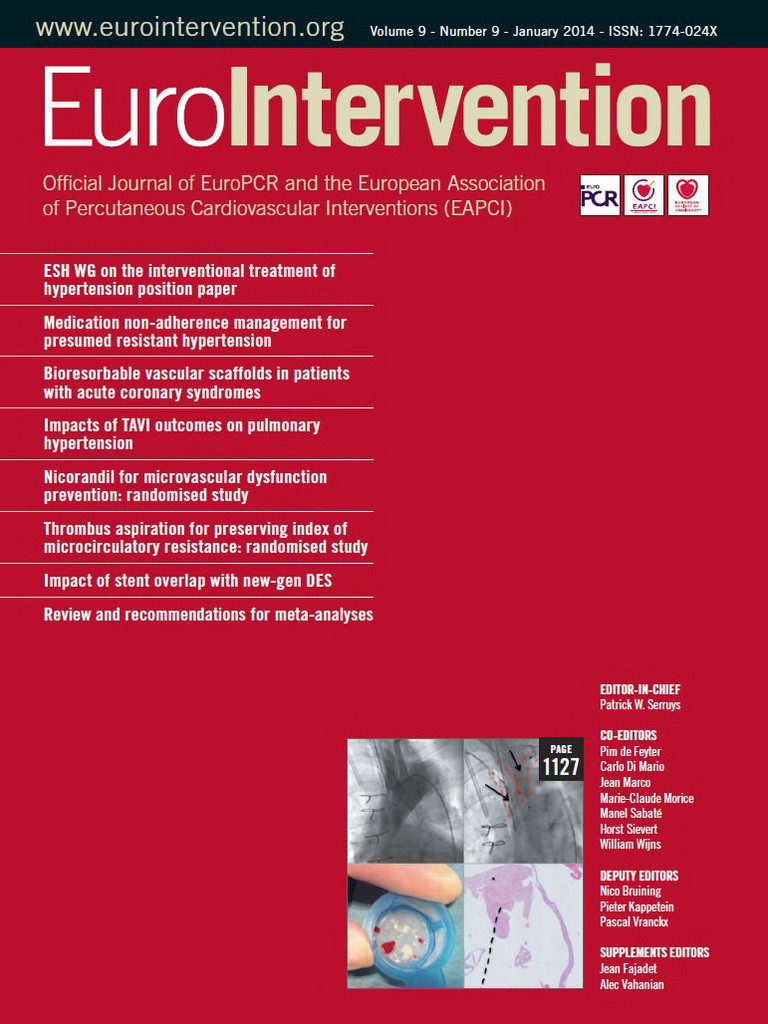An 83-year-old female patient underwent a transcatheter aortic valve implantation (TAVI) for symptomatic severe aortic stenosis with a high operative risk (logistic EuroSCORE 45%). The procedure was performed using the Montage™ Dual Filter embolic protection device (EPD) (Claret Medical, Inc., Santa Rosa, CA, USA), inserted through a right radial artery and encompassing the deployment of a proximal filter basket in the brachiocephalic trunk and a distal filter basket in the left common carotid artery (Figure 1A and Figure 1B). The procedure evolved uneventfully with successful deployment of a 29 mm Medtronic CoreValve™ (Medtronic Inc., Minneapolis, MN, USA) (Figure 1C). The EPD was then retrieved and contained a mixture of red and white material (with sizes varying from 1.5 to 7.1 mm) (Figure 1D). Figure 1E illustrates microscopic (magnification 2x) overview of two different fragments after haematoxylin & eosin (H&E) staining with material resembling tissue (*) and thrombus (**). Further analysis (magnification 20x) of the tissue fragment (Figure 1F) shows spindle-shaped fibroblasts with small purple nuclei and vacuolated proteoglycan-rich cytoplasm (light blue) partly covered by remnants of endothelial lining. These features can stem from large elastic arteries but seem more compatible with aortic valve leaflet origin given the absence of atherosclerosis or other typical hallmarks of vessel structures and bearing in mind the aortic root instrumentation during TAVI. Figure 1G (magnification 20x) demonstrates fibrin material (dark pink) mixed with clusters of platelets (blue), white blood cells (purple) and erythrocytes (red) and represents typical thrombus formation. Further research is warranted to assess whether the use of embolic protection devices will reduce the incidence of TAVI-related cerebrovascular embolisation and procedural stroke.

Figure 1. Transcatheter aortic valve implantation under cerebral embolic protection with the Montage Dual Filter and analysis of captured debris.
Conflict of interest statement
The authors have no conflicts of interest to declare.

